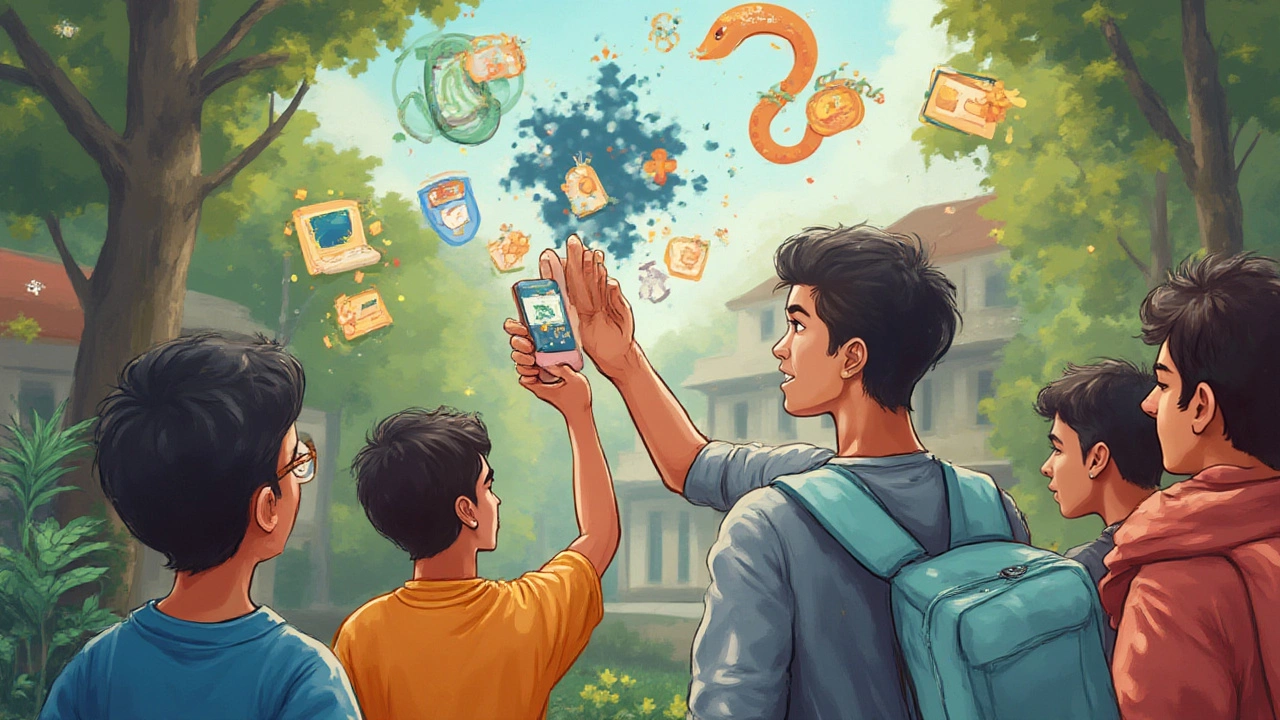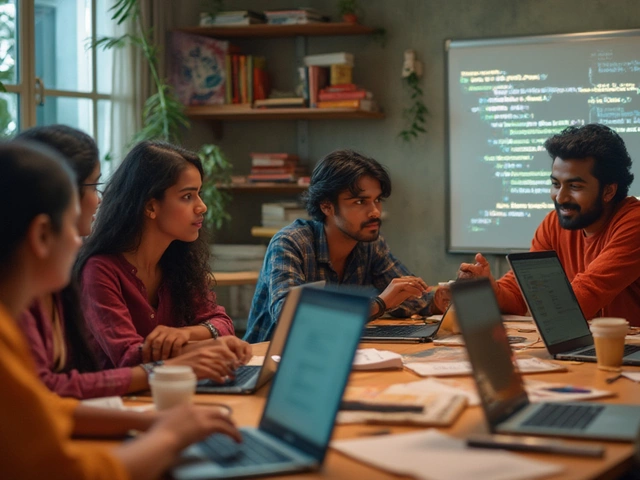
Every day, someone somewhere is typing their first line of Python code. You’ve probably heard how easy this language is supposed to be, but let’s be brutally honest—easy is pretty subjective. What’s a walk in the park for one person can feel like an uphill marathon for someone else. But there’s a reason Python has such a glowing reputation: not only do huge companies like Google, Instagram, and Netflix put their trust in it, but Python also tops charts for first-time coders everywhere. So what makes it tick? And is it really that beginner-friendly?
Why Python is Hailed as Beginner-Friendly
Walk into any beginner programming course, and odds are strong that Python is front and center. That’s because Python's syntax is famously close to plain English—no weird brackets all over the place, no intimidating semicolons. You can actually read Python and understand what it’s doing, even with zero programming background. Here’s a taste: if you type print("Hello, World!") in Python, it just works. That’s not the case with most other languages. Java or C++ would ask for multiple lines just to spit out a message.
Another big plus: Python isn’t picky about your operating system. Whether you’re on Windows, Mac, or Linux, you can download Python and start coding today. That flexibility makes it a go-to language in classrooms, coding bootcamps, and crazy side projects across the globe.
But it’s not just about the language—it's the community. The Python community is huge and always ready to help. Got an error message at midnight? Googling it almost always brings up a Stack Overflow answer from someone who’s already solved your exact problem. Online forums, Reddit threads, and even Discord channels keep beginners from ever feeling lost for long.
If you’re worried about what you can do with Python, you’re asking the right question. The answer: almost anything! Web development, data analysis, AI, automation, cybersecurity—the list is endless. Python’s also used as a “glue code” language, letting you connect different software together. So a beginner doesn’t have to pick a specialty early on, and there’s very little wasted effort.
Here’s one killer stat: According to the TIOBE index and Stack Overflow Developer Survey, Python has consistently ranked either #1 or #2 in popularity among global developers for the last five years, as of mid-2025. That surge is mostly thanks to its welcoming learning curve and all the doors it opens.
The Truth About the Learning Curve
It’s easy to claim “Python is simple!” and leave it at that, but reality is always a little more nuanced. The first days might feel like magic. Writing “Hello, World!”, adding two numbers, or making a short calculator—all of that is usually smooth sailing. Python lets you skip the boilerplate, so you jump right into solving actual problems.
But soon, the training wheels come off. Concepts like loops, lists, and functions are beginner-friendly, but as soon as you get curious about real programs, things ramp up quickly: objects, classes, decorators, recursion, and more. Python is designed so you don’t have to learn everything at once. You can write basic, useful code with just a handful of rules. But to build killer applications or pass coding interviews? You’ll still need to tackle more complex topics.
The other side of the learning curve is about habits, not just facts. As neat and tidy as Python feels, it still punishes copy-pasting without understanding. Forgetting a colon at the end of an if statement, or mixing tabs and spaces for indentation may leave you staring at cryptic errors. Python won’t run unless your code looks right. That puts a premium on neat code, which is a great habit to develop early. But it can frustrate beginners who aren't used to such strictness.
One unique trait: Python is interpreted, not compiled. That means you don’t have to run a bunch of extra steps to see your results—just write, save, and run. Immediate feedback turns learning into more of a game. You’ll know real fast if something isn’t working, which is both a blessing and, occasionally, a curse when the cause isn’t obvious.
The bottom line? “Easy to learn” doesn’t mean “easy forever.” Beginners do well, but mastery still demands time, effort, and lots of Googling. You’re less likely to get stuck on spelling and grammar, but big-picture problem-solving remains hard, no matter the language.

Python vs Other Programming Languages for Starters
You can’t talk about Python’s learnability without comparing it to the rival camps. JavaScript is another big name for newbies, mainly because it powers websites everywhere. But JavaScript’s quirks and less readable syntax often scare off first-timers. Java and C++? Those are like eating your vegetables without any spices—great once you’re a coder, but rarely tasty at the start. C++ is famous for cryptic error messages and manual memory management, while Java wants you to wrap everything inside “public static void main” from day one.
Python just lets you code without the extra baggage. You don’t need to stress about setting up huge packages or learning loads of jargon just to get moving. You can focus on what you actually want to build. Here in Cape Town, I see loads of after-school coding clubs and hackathons that pick Python for this exact reason. Kids build simple games or solve fun math problems without needing an IT idol as a guide.
There’s another angle—Python’s massive standard library. Think of it as a power toolbox: need to handle dates, download web pages, connect to databases, or build a simple website? Just import a few modules and you’re off. Languages like C or Go demand third-party libraries for the same jobs, and that’s more overhead for a newbie.
The one spot where Python may trip you up: speed. Python’s not the fastest language, so if you’re tackling heavy graphics or lightning-fast games, something like C++ or JavaScript might deliver better performance. But let’s be real—beginners care way more about learning solid logic than squeezing extra frames per second out of a game.
If you’re thinking about job prospects, here’s some hard data: LinkedIn’s job database (as of 2025) shows Python routinely appears in more job ads for entry-level developers than almost any other language. It’s what companies want and universities teach. Just last year, the University of Cape Town featured Python as the introductory language in their computer science program, thanks to how resilient students found it to be—fewer dropouts and more project completions.
Tips to Make Learning Python Even Easier
Getting started with Python might be simple, but going from "just started" to "confident coder" calls for a few smart moves. First up: don’t fall into the tutorial rabbit hole. It’s way too easy to watch endless YouTube videos but never try things on your own. Instead, pick a small project that actually interests you. Want to automate boring chores, analyze your Spotify playlist, or create a silly chatbot? Anything that makes you excited to code will keep you on track. Projects drive learning way faster than just reading docs.
Speaking of docs, don’t ignore the official Python documentation. It might look dense at first, but it’s one of the most well-written docs out there. Google is your friend, but official docs are usually faster. And if the lingo gets overwhelming, sites like Real Python and W3Schools break things down in plain language.
Nothing beats tinkering. Open up your terminal or an app like VS Code, write some code, break it, then fix it. Each bug is a lesson. Don’t be too hard on yourself—nobody writes bug-free code from day one. If you get stuck, copy the error into Google or Stack Overflow. Odds are, someone else already fell into the same hole.
Code every day, even if it’s just 15 minutes. Learning to code is like learning a language—you’ll get rusty if you stop, and daily practice cements the basics. Try Python coding challenges like “100 Days of Code” or “Advent of Code” to stay motivated. You can even join meetups here in Cape Town or virtual study groups to connect with fellow learners.
Remember, even pro developers keep learning. It’s normal to feel lost, especially as you hit new concepts like object-oriented programming or working with APIs. The trick is to break problems into tiny chunks and Google ruthlessly. No shame in not knowing something—Python itself is famous for the advice “Ask for forgiveness, not permission.” Write your code, see what happens, adjust as needed.

Is Python the Right Choice for You?
If you want a language that's quick to write, widely used, and doesn't force you to speak robot, Python checks all the boxes. It’s not “just for kids” or “only for data people.” Sure, Python shines in artificial intelligence, machine learning, web apps, and even game prototypes, but it's also at home in basic scripting and quick fixes for real-life jobs.
The world’s biggest tech companies and the tiniest local startups are all betting on Python. Even NASA’s used Python in critical projects—if it’s good enough for them, you can trust it’ll get you started in style. But don’t let popularity alone sway your decision. If you hate white space or want a language that forces strict structure from the get-go, Python might feel strange. And if you’re diving into hardcore mobile development, you’ll probably need to learn Java or Swift eventually too.
You’ll hear a lot of noise online about which language is best. The real answer depends on what sparks your interest and lets you keep going when things get tough. For 90% of newcomers, Python makes tough things feel achievable. There’s no shortage of books, video courses, and online support. And in case you’re into weird trivia: Python’s not named after the snake. Its creator, Guido van Rossum, named it after “Monty Python’s Flying Circus,” a British comedy series he loved. That sense of playfulness still runs deep in the community—and maybe that's why learning Python can actually feel fun.
A decade ago, I started with Python, sitting at a coffee shop in Cape Town with dodgy Wi-Fi and nothing but a stubborn attitude. If I could get the hang of it, so can you. The best thing about Python? It doesn’t judge your skill, age, or ambitions. It meets you where you are, holds your hand, and quietly invites you to dream a little bigger. The best time to start playing with Python is right now—a few lines today could turn into the next viral app or solve your most tedious problem tomorrow. And hey, if you get stuck, you’ve got one of the friendliest coding communities on your side.





